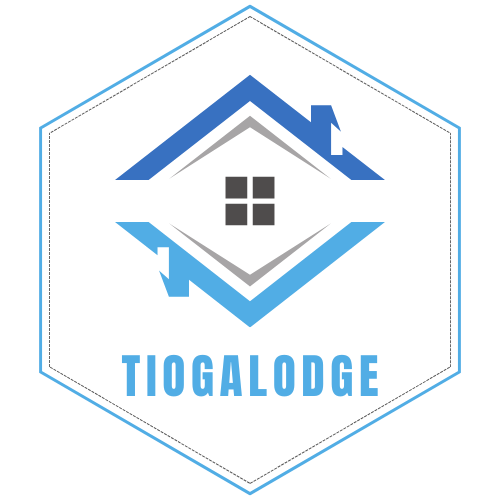Table of Contents
ToggleBuying a home for the first time can feel like trying to find a unicorn in a haystack. With soaring prices and a mountain of paperwork, it’s easy to feel overwhelmed. But fear not, aspiring homeowners! There’s a treasure trove of first-time home buyer programs designed to help lighten that hefty down payment burden.
Understanding First-Time Home Buyer Programs
Various programs aim to assist first-time home buyers with down payments, making homeownership more attainable. These initiatives often provide financial support, guiding individuals through the complex process of purchasing a home. Depending on the buyer’s situation, grants and loans are accessible through federal, state, and local agencies.
One prominent program is the Federal Housing Administration (FHA) loan. This loan features lower down payment requirements, appealing to many first-time buyers. Typically, buyers qualify with a down payment as low as 3.5% of the home’s purchase price.
Additionally, state-specific programs exist. Many states offer down payment assistance programs that provide grants or interest-free loans. Such programs can help cover closing costs, reducing the financial burden on buyers.
Local housing authorities also play a vital role. They often have programs tailored to the community’s needs. Many of these initiatives emphasize low-income buyers, ensuring equitable access to homeownership.
First-time buyers should research specific eligibility criteria. Examinations of income limits and property requirements are essential steps. Understanding these factors can significantly enhance the chances of securing financial assistance.
Moreover, new buyers must explore the HomeReady and Home Possible programs. These initiatives from Fannie Mae and Freddie Mac feature flexible underwriting guidelines and reduced mortgage insurance rates. Such measures facilitate homeownership for those with limited resources.
First-time home buyer programs provide crucial support for down payments. Access to these options empowers individuals to make informed decisions, ensuring a smoother transition into homeownership.
Importance of Down Payment Assistance

Down payment assistance programs play a critical role in making homeownership feasible for first-time buyers. These initiatives alleviate financial burdens and enhance opportunities for individuals striving to secure their dream homes.
Types of Down Payment Assistance
Down payment assistance comes in various forms. Grants provide immediate funds that do not require repayment. Low-interest loans offer financial help with flexible terms, enabling buyers to pay back over time. Matching programs incentivize savings by matching contributions made by buyers. Finally, forgivable loans act as a reward for remaining in a home for a certain period, further supporting stability in homeownership.
Benefits of Down Payment Assistance
Down payment assistance offers multiple advantages. Lower upfront costs make homeownership accessible for individuals with limited savings. Programs often feature reduced mortgage insurance rates, lowering monthly payments. Qualifying for assistance can increase the chance of securing a mortgage loan. Additionally, many assistance programs educate buyers, allowing them to make informed decisions throughout the purchasing process. Overall, these benefits streamline the journey to homeownership while empowering first-time buyers.
Popular First-Time Home Buyer Programs
Various programs exist to assist first-time home buyers in overcoming down payment challenges. These initiatives range from federal to local levels, offering diverse support systems.
Federal Housing Administration (FHA) Loans
FHA loans feature lower down payment requirements, appealing to many first-time buyers. Typically, this program allows for down payments as low as 3.5%. Borrowers with credit scores starting at 580 can qualify, making homeownership attainable for those with limited financial resources. FHA loans also include flexible debt-to-income ratios. This flexibility enhances chances of approval and smooths the path to securing a mortgage.
USDA Loans for Rural Homebuyers
USDA loans cater specifically to homebuyers in rural and suburban areas. These loans require no down payment, which significantly reduces upfront costs. Eligibility hinges on household income limits, usually capped at 115% of the area median income. Additionally, properties must reside in qualified rural regions, presenting an attractive option for buyers looking outside urban centers. Low mortgage insurance rates further enhance affordability, supporting homeownership in less populated areas.
VA Loans for Veterans
VA loans serve veterans, active-duty service members, and certain members of the National Guard and Reserves. These programs provide several advantages, including zero down payment and no private mortgage insurance requirements. Eligibility is based on service length and discharge type, ensuring that those who served the country receive support. Interest rates tend to be competitive, further assisting veterans in achieving homeownership. The program also allows for refinancing options, contributing to long-term financial benefits.
How to Qualify for Assistance Programs
Qualifying for assistance programs can significantly ease the home buying process. Criteria differ among programs, and understanding these requirements is essential for first-time buyers.
Eligibility Criteria
Each program has specific eligibility criteria. Income limits often play a crucial role in determining suitability for assistance. Many programs target low to moderate-income households, usually defined as earning a percentage of the area median income. First-time buyers typically qualify if they haven’t owned a home in the past three years. Additionally, credit scores are a determining factor, with requirements varying between programs. Some initiatives accept scores as low as 580, while others may set a higher threshold. First-time buyers must also demonstrate the ability to sustain mortgage payments, assessed through an evaluation of financial stability and debt-to-income ratios.
Application Process
Navigating the application process requires careful attention to detail. First, potential buyers should gather necessary documentation, such as income statements, tax returns, and identification. Many programs encourage online applications to streamline the submission process. After submitting an application, the buyer will likely need to attend an interview or provide additional information, depending on the program’s requirements. It’s common for applicants to face waiting periods while organizations review their applications. Buyers must remain proactive during this time, following up and ensuring all required documents are submitted. Successful applicants typically receive notifications outlining the next steps to access funds or support.
Navigating the journey to homeownership can feel overwhelming for first-time buyers. However, the availability of various down payment assistance programs significantly eases this transition. By leveraging federal, state, and local initiatives, buyers can access the financial support they need to make their dreams of owning a home a reality.
Understanding eligibility criteria and exploring options like FHA, USDA, and VA loans can empower buyers to make informed decisions. With the right resources and guidance, first-time home buyers can overcome financial barriers and embark on their path to homeownership with confidence.




